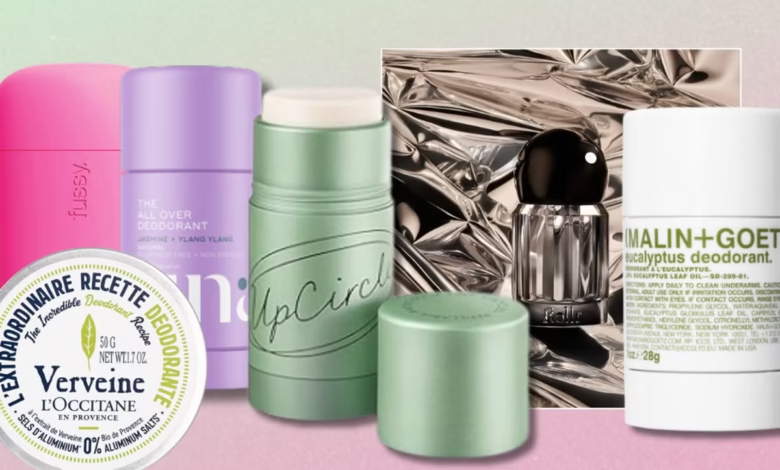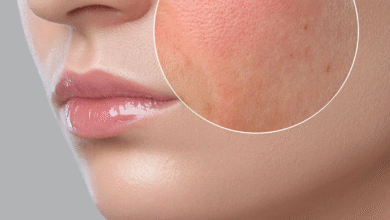Naturally Fresh: The Complete Guide to Choosing the Best Natural Deodorant

Introduction
Making the switch to a natural deodorant is more than a trend for many it’s a move toward cleaner ingredients, gentler formulas, and more transparency from brands. Unlike antiperspirants, natural deodorants focus on neutralizing odor and supporting the skin’s microbiome rather than blocking sweat. That means results can vary by person, depending on body chemistry, activity level, and skin sensitivity. When shopping, it’s helpful to understand what “natural” actually means on labels (there’s no single regulated definition), which ingredients do the heavy lifting against odor, and which ones commonly cause irritation. This guide breaks down the essentials so you can choose a natural deodorant that fits your needs, minimize the risk of rashes, and set realistic expectations about sweat vs. odor control. I’ll also explain gentle alternatives to common irritants and give practical tips for a smooth transition so you can stay fresh without sacrificing comfort.
What is a natural deodorant and how is it different from antiperspirant?
Natural deodorants are formulations designed to reduce or neutralize body odor using plant-based and mineral ingredients, while typically avoiding aluminum compounds that block sweat glands. Because they don’t stop sweating, natural deodorants won’t give the “dry underarm” effect of antiperspirants; instead they focus on controlling bacteria and scent. Many rely on powders (arrowroot, tapioca), absorbents (kaolin clay), and odor-neutralizers (baking soda, magnesium hydroxide, zinc oxide) plus moisturizing butters and waxes for texture. This approach preserves the body’s natural cooling system while aiming to keep you smelling fresh. Importantly, research shows that claims linking aluminum in antiperspirants to serious diseases remain unproven; mainstream dermatologists generally consider aluminum-based antiperspirants safe for most people. However, people who prefer to avoid aluminum for personal or sensitivity reasons often choose natural deodorants as an alternative.
Key ingredients to look for effective and gentle options
When evaluating a natural deodorant, focus on ingredients that neutralize odor, manage moisture, soothe skin, and reduce bacterial growth. Odor control often comes from baking soda (sodium bicarbonate), magnesium hydroxide, or zinc compounds; baking soda is a powerful neutralizer but is also a common cause of underarm irritation for sensitive users. For gentler formulas, magnesium hydroxide and non-nano zinc oxide can offer odor control with lower irritation risk. Absorbent powders such as arrowroot or tapioca help with moisture management without blocking pores. Soothing and conditioning agents coconut oil, shea butter, jojoba, and vitamin E improve texture and comfort, while beeswax or plant waxes stabilize the stick or balm. Fragrances in natural deodorants tend to be essential-oil blends or mild parfum; note that fragrances (even “natural” ones) can trigger allergies. If you have sensitive skin, prefer fragrance-free and baking-soda-free formulas or look for brands that explicitly use magnesium or zinc as their active odor-fighting agents.
How to choose based on your skin type and activity level
Choosing the right natural deodorant depends on two things: how your skin reacts and how much you sweat. If you have sensitive skin or have experienced rashes from natural sticks before, look for “baking soda-free” labels and seek formulas with magnesium hydroxide, zinc oxide, or probiotics ingredients that target odor with gentler chemistry. People with very low to moderate sweat may find cream or stick natural deodorants perfectly sufficient with one application per morning; more active people (workouts, hot climates) might need to reapply midday or choose a stronger odour-neutralizing formula and pair it with good hygiene (wash with antibacterial soap after heavy sweat). If you shave frequently, give your underarms a day to recover before trying a new formula and do a patch test to check for irritation. For travel or long days, carry a travel size or sample so you can top up if needed. Remember: many users go through a short adjustment period when they stop using antiperspirants body odor can change as your microbiome adapts so try a few formulas with different active ingredients until you find the right balance of comfort and efficacy.
Pros and cons of natural deodorants
Natural deodorants offer clear benefits: cleaner ingredient lists, no aluminum (for those who prefer to avoid it), and a gentler profile for many users. They also promote transparency most indie brands list every ingredient and often come in eco-friendly packaging. On the flip side, natural deodorants do not stop sweating; they are not antiperspirants. Some people experience a “transition” period with stronger odor for a few days to weeks while the body adjusts. Ingredients like baking soda and certain essential oils can cause contact dermatitis or itching for susceptible individuals, making testing necessary. Efficacy varies widely across brands and body chemistries: what works for one person may not work for another. Finally, price can be higher for niche, small-batch natural brands. Overall, natural deodorants shine for users prioritizing ingredient safety, sustainability, and skin friendliness, but they require realistic expectations about sweat control and occasional product trialing.
Tips for a smooth switch
Switching from antiperspirant to natural deodorant works best with a patient, methodical approach. Start by choosing a gentle, baking-soda-free option if you have sensitive skin. In the first two weeks, wash underarms daily with a gentle cleanser to reduce bacterial load; this can help limit stronger odors during the transition. If you do experience irritation, stop use and patch-test a different formula that uses magnesium or zinc instead of baking soda. Reapply as needed many active users reapply post-workout or mid-day. Exfoliating once a week (gently) can remove dead skin cells and product buildup which sometimes trap odor. For travel or hot climates, pack an extra stick and consider breathable, moisture-wicking clothing. If persistent irritation or an unusual rash appears, seek advice from a dermatologist. And lastly, keep expectations realistic: natural deodorants can control odor well for many people, but they won’t eliminate sweating they simply offer a cleaner, gentler way to stay fresh.
Conclusion
Natural deodorants are a practical, ingredient-conscious option for those who want odor control without aluminum or harsh additives. The “best” choice depends on your skin sensitivity, activity level, scent preference, and tolerance for reapplication. Prioritize gentle active ingredients (magnesium or zinc if sensitive), avoid unnecessary fragrances if you react easily, and be ready to test a couple of formulas. With the right product and a little patience during the transition, you can stay comfortable and confident while using cleaner, more transparent underarm care.
FAQs
Q: Do natural deodorants stop sweat?
A: No they neutralize odor but don’t block sweat glands; antiperspirants do that using aluminum compounds.
Q: Is baking soda in deodorant safe?
A: Baking soda works well for odor but can irritate sensitive skin and cause contact dermatitis for some users; alternatives like magnesium hydroxide or zinc are gentler.
Q: How long does the adjustment period last?
A: Many people notice changes for a few days to a few weeks as their body chemistry and microbiome adjust. Maintain hygiene and be patient.
Q: What if I get a rash?
A: Stop use, wash the area, and consider a baking-soda-free or fragrance-free formula. If the rash persists, see a dermatologist.
Q: Any tips for heavy sweaters?
A: Try high-performance natural formulas, reapply as needed, wear breathable fabrics, and shower after heavy sweating. Some users combine natural deodorant with clinical antiperspirant on days they need sweat control.



